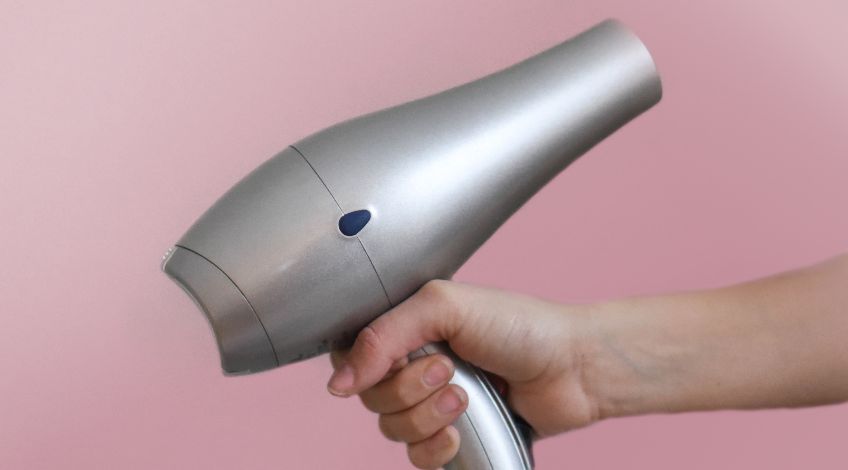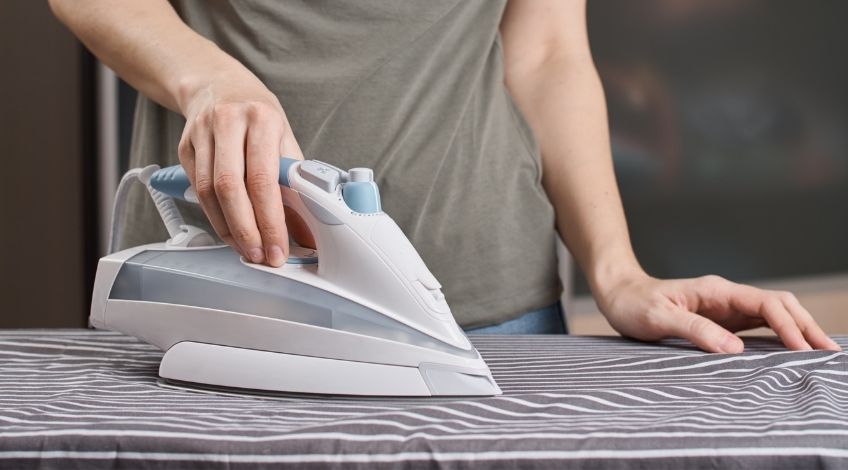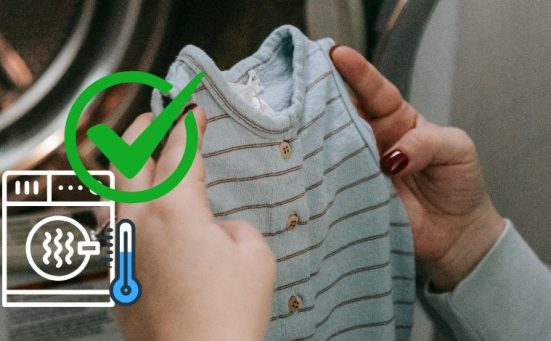
12 Tumble Dryer Alternatives: How to dry clothes indoors without a Dryer
In a recent poll of 2000 adults [1], it was found that the average washing machine will wash 4 loads of washing every week. That’s 4 loads of washing every week, Summer or Winter, 4 loads of washing that needs drying every week. If you don’t have the room for a tumble dryer, or you can’t afford to operate a tumble dryer, drying clothes during the cold wet Winter months can be challenging.
Obviously, the best option for drying wet washing when the weather’s bad outside is by using a tumble dryer. But tumble dryers use a lot of electricity and can damage delicate garments too. There are alternative ways to dry clothes indoors without the use of a tumble dryer. We’ve come up with12 ways to dry your clothes indoors without using a tumble dryer.
1. Clothes Airer
- Large Drying Space – With 21m of drying space you can easily dry all your laundry. With extra fold out hangers, you can easily dry 2+ laundry loads.
- Easy to Use – With fold down hooks, you can collapse & store your airer in seconds. The locking mechanism prevents sagging & keeps your airer upright.
- ✔️ GENEROUS CAPACITY – Our laundry rack boasts a 3-tier construction with a massive 15m (49ft) of drying space (18 rails) capacity, ample for…
- ✔️ SPACE SAVER – Its verticality means that it doesnâ€t take up much space in your home. Once the clothes are dry and ready to fold or iron,…
- Rainberg 4-TIER Oversized Clothes Drying Rack: This rack has an oversized 4-tier design and two wing hooks for drying towels, socks, clothes, shoes,…
- Stable Design: The drying rack is made of high-hardness stainless steel and durable plastic, with bold double columns on both sides, which is more…
A clothes airer or clothes horse as they are also known, has a lightweight frame with enough space to lay clothes flat across the bars plus you have the option of hanging your laundry onto the frame as well. They use no power and produce no heat, so drying laundry can take some time.
However, placing the clothes airer in front of a window that catches the Winter sunlight can help. But it’s worth remembering the moisture from the laundry has to go somewhere so it might be a good idea to invest in a dehumidifier to remove excess moisture to prevent any damp or mould from forming.
To be sure clothes dry quickly, you’ll need to allow each item enough space with enough of a gap to prevent touching any other items. This is because this type of drying relies on air flow. You’ll probably find it best to split the wash load in 2 and dry one half before airing the second half. Or if space allows, get a larger rack (or 2 smaller ones).
Before buying a clothes airer you’ll need to consider just how much space it will take up and if you have enough room to store it when it’s not in use. The majority of clothes airers are foldable but they still need storing somewhere when they’re not in use.
2. Heated Airer
- Ideal solution for drying and airing clothes and towels indoors; Electrically-heated rails for gentle, natural drying; 18 bars give plenty of hanging…
- LESS THAN 4p PER HOUR TO RUN- energy saving alternative to tumble dryers; Kinder to clothes than tumble dryers
- UNBEATABLE ENERGY EFFICIENCY: The STATUS Heated Clothes Airer features low energy consumption allowing for the quick and efficient drying of your…
- PREMIUM NON-RUST ALUMINIUM FRAME: Crafted from high-quality aluminium, the STATUS clothes airer ensures long-lasting durability. Say goodbye to…
- Heated to speed up the drying process
- Includes heated fold-out wings
A heated airer is similar in design to a standard airer but with the addition of a heating element that’s powered by electricity. Some come with a cover that speeds up the drying process by trapping the warm air inside. But the average drying time is around 8 hours which although slow, is much faster than a non electric airer.
Benefits of using a heated airer include its speed (compared to a non-electric airer), plus a heated airer produces little moisture especially if it has a cover. If it doesn’t come with a cover, they can often be bought separately or you could use a duvet cover.
3. Dehumidifier

There are dehumidifiers available with a dedicated laundry setting which creates the best conditions for drying clothes faster. For models that don’t have laundry settings, use the “Auto” setting. You’ll still need to hang your laundry on an airer or rack in front of the dehumidifier.
Using a dehumidifier also helps to prevent damp and mould, but you’ll need a full size model not one of those bedside models.
4. Electric Fan
If you don’t have a dehumidifier, placing a fan near the airer will increase air flow and help to dry your laundry. You should also open a window to allow the moisture to exit the room. The best case scenario would be using an electric fan and a dehumidifier to cut down drying times.
5. Towel Roll
For small single items or delicate items a quick way to remove excess water is to wrap the garment in a dry towel. Lay the towel out flat and place the item on the towel, then wrap the towel as if it were a burrito. Once the towel is fully rolled apply pressure to it with your knees or twist it (not recommended for delicate items). If the item has been through the spinner first it will be almost dry once you unroll the towel.
6. Hair Dryer

After small items like socks, hankies etc have been spin dried, or tee shirts have been dried using the towel wrap method, it is possible to remove any remaining moisture using a hair dryer. You’ll need to exercise some caution as hair dryers can produce too much concentrated heat which can damage some fabrics, especially if the hair dryer is placed too close to the fabric.
The secret to successful drying without causing any heat damage is to keep the hair dryer moving and never allow the hot air to stay on one part of the fabric for too long. To make this easier it is best to hang the tee shirt on a coat hanger or drape it over the back of a chair etc. This leaves both hands free, one to operate the hair dryer and the other to keep checking on the temperature of the garment.
7. Retractable Clothes Line
There are a number of these on the market and they are all pretty much the same design. A wall mounted box containing a braided nylon line that can be pulled out across a room and secured to create an indoor washing line. Once you’re finished with it, simply allow the line to retract into the box until you need it again.
8. Radiator Racks
Many people dry their washing on their radiators during the Winter months or on wet days during Spring and Autumn. But apart from the problems with moisture, placing anything directly on the radiator makes the radiator work harder to reach the desired temperature which means higher heating bills. Using a radiator rack will cut down on heat loss to some degree but you will still have higher bills as the radiator has to contend with the extra moisture too.
If you do decide to use radiator racks it is advisable to invest in a dehumidifier to deal with the increased moisture. This will help to keep energy costs as low as possible.
9. High Spin Cycle
When doing washing during the colder and wetter months of the year, it’s always going to be a good idea to use the highest spin cycle available on your washing machine. Although this won’t completely dry your laundry, the more water that’s removed before leaving the washing machine, the less there is to deal with when trying to get the laundry dry.
It might cost more in terms of electricity to use a higher spin cycle but that can easily be offset by the faster drying times. This is especially true for thicker items like towels or denims which take such a long time to dry.
You can also run an extra spin cycle for those thicker, harder to dry clothes to remove even more moisture.
10. Spin Dryer
The spin speed of a spin dryer is far faster than the highest spin speed on your washing machine. Laundry will come out of the spin dryer far dryer than from a spin cycle on a washing machine. Whilst not dry, the laundry will be much dryer and therefore easier to completely dry.
11. Oven Ready Laundry
Small items such as underwear or socks can be dried in the oven as long as you take care. Preheat the oven to 100 degrees (or ¼ gas mark), once the oven reaches the temperature (or 15 minutes) turn the oven off. Then place the items of clothing on a baking sheet for 10 to 15 minutes.
This should not be used for delicates or non cotton fabrics. Plus there is the possibility of damaging the oven if there is too much moisture. Be sure the clothing isn’t wringing wet before placing them in the oven.
12. Iron Dry

This method really helps to absorb excess moisture. Place the wet item on your ironing board and cover with a clean towel. Then set the iron on high heat and iron the towel on both sides. The heat from the iron will transfer to the clothing without burning the clothes.
Never iron wet clothing directly, always be sure to place a clean towel on top of the wet clothing to avoid damaging the clothing.
Frequently Asked Questions
Whilst a tumble dryer is a convenient way to get your laundry dry, it is also expensive and can damage delicate clothing. There are a number of alternatives to using a tumble dryer including an airer, spin dryer, indoor clothes line and using an iron through a clean towel.
You can dry your clothes faster indoors by making sure you leave enough space between each item to allow enough air flow. Use a dehumidifier to help absorb the moisture, some even have laundry settings.
It is not advisable to dry clothes in the microwave. Especially large items like bedsheets, jeans etc, there is a real possibility of starting a fire if you attempt to dry clothes in the microwave.
Cold air does dry clothes, it’s cold wet air that prevents clothes from drying. As long as the air is dry, clothes will dry in cold air.
Also, follow us on Pinterest ...









